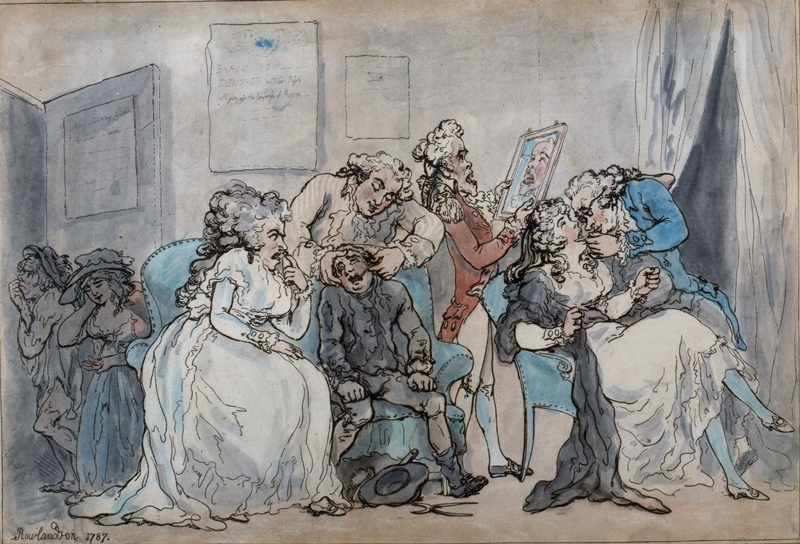The Transplant and Life exhibition is a wonderful record of the impact of transplantation on people’s lives in the 21st Century. We can appreciate the advances in surgery and technology which make this life-transforming therapy successful, but there is a long history of the dreams and aspirations of earlier surgeons and scientists who were able to imagine how transplantation could help sick patients. They were only limited by the knowledge and techniques available in their lifetime.
John Hunter was one such visionary, a remarkable surgeon and scientist working in the eighteenth century. By hosting Transplant and Life within the Hunterian Museum, we provide a contextual perspective on how modern transplantation has been built upon the ideas, hopes and studies of earlier times.
Transplantation needed to develop alongside a clear understanding of the structure and anatomy of organs, if there was to be any hope of placing them inside a living patient. In particular, the blood supply to the new organ needed to work as normal, otherwise the organ would wither and die. In Hunter’s times, there were debates about blood circulation: Hunter himself espoused the concept of materia vitæ diffusa (what we now call blood circulation), which supported life in the body as a whole, but equally in each individual organ. Understanding blood circulation in each organ was essential to developing the concept of transplantation. An early example of how the blood supply to human organs was studied can be seen in the Evelyn Tables. Such preparations allowed surgeons to understand how blood could circulate inside the organs, an essential step to in developing the ability to take an organ from one body and transplant it to another.
Hunter did not have the techniques available in his lifetime to be able to transplant internal body organs, but he was able to experiment with transplanting small tissues to external body sites in animals. He attempted to transplant the spur (claw) of a cockerel from the foot to the comb (the fleshy part of the head). This may seem bizarre to us, but Hunter understood that for transplanted tissue to survive, it would need good blood circulation. The comb is rich in blood vessels and proved an excellent choice for external grafting. Hunter also experimented by transferring human teeth to a cockerel’s comb, and made determined efforts, through careful post mortem anatomical inspection, to show that the cockerel’s circulatory system had developed to support the living tooth. Hunter also appreciated that this was a different step – transferring a human tooth to a cockerel was a different process from transplanting the animal’s own spur to a different location on the body, but there was no clear knowledge at the time about the challenges of self and non-self in transplantation – this would take another 150 years of scientific research.
Hunter did not have the essential techniques available to him to be able to perform organ transplantation, which requires the blood vessels of the donor organ to be properly joined to the patient. This procedure, called anastomosis, was developed by Alexis Carrell, working with silk threads in France in the early 20th Century. These methods have become a mainstay of modern organ transplantation and surgical reconstruction: see Exhibit 24 - Microsurgery. They are also demonstrated in the video on bypass surgery (upper floor, near the transplant case).
In some organ transplants, the blood circulation of the patient needs to be supported by an artificial pump whilst the new organ is placed in the body. This is especially so for heart transplantation, but it is also used from time to time with other organs such as the liver. Such artificial circulation was made possible by the development of artificial bypass machines in the 1950s, and a prototype of this technology can be seen in the modern surgery case.
Moving a donor organ to a recipient patient requires that the tissue of the organ remain viable outside the body so that its vital functions can be resumed once transplanted. One way to deal with this is to cool the organ down to low temperatures, to delay deterioration just as we use fridges to prevent food spoilage. Hunter carried out some experiments on cold in living systems, including freezing tissues and observing fish in ponds over the winter. He showed that life activities were slowed down in progressively colder water, but if the water froze, the fish could not recover.
Chilling has become a mainstay for preserving organs for transplantation, and an example of an insulated transport box can be seen in the modern surgery gallery. Today, this method allows organs to be transported across the country for transplantation when needed.
More recently – and in accord with Hunter’s concepts of the importance of the organ blood circulation in transplantation – perfusion machines have been introduced which slowly circulate a cooled preservation solution through the donor organ during transport. A LifePort kidney transporter can be seen in the 'Museum After Hunter' gallery, with a model kidney positioned in the transport cassette. These machines have been used in the UK since about 2005.
Hunter was not alone in his aspirations to make transplantation a reality, but he is recognised as one of the most far-sighted surgeons of his time.
Prof. Barry Fuller
Professor of Surgical Sciences, University College London
'Transplant and Life' runs at the Hunterian Museum London from 19 November 2016-20 May 2017.
